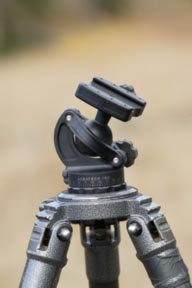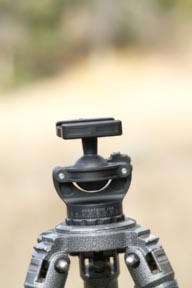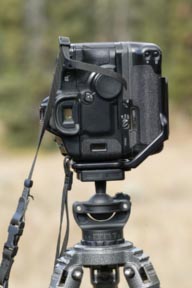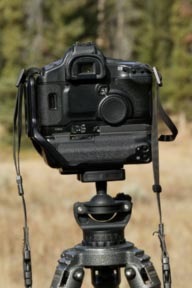

Yep, it's true. For years the ballhead I used was a Arca-Swiss Studio Ball. Eventually the head 'wore out,' losing its fluidity of motion from grit, dust, and whatever. The large plastic locking knobs cracked and split from too much rough handling and it was time to replace the head. Over the years I've tried several -- with varying degrees of success. The FOBA head was the least satisfactory for me. My model locked up and was jerky from the day I bought it. Other folks, including someone on our last photo shoot to Yellowstone, have had better luck, but my model was a wreck. I still have it (I couldn't in good conscience sell a lemon), and whenever I try to use it I literally have to use two hands to unlock the frozen ball joint.
Arca-Swiss replaced the Studio Ballhead with the B1 and B1G ballheads. The B1 was a much smaller head than the first model, but it was prone to freezing up and required special efforts at times to unlock a frozen head. While small, the head was still around 2 pounds, and, more importantly, it was unreliable by locking up when I least expected it.
A few years ago a photographer-backpacker disappointed by the weights and the unreliability of his ballheads decided to make his own. The result, the Acratech ball head, which weighs less than a pound and can hold a 25 pound camera-lens system. Although I use the ballhead with my shorter lenses -- usually a 120-300 Signma 2.8 zoom or smaller, when the head was mounted and I didn't have time to switch to my Wimberley, I've used the Acratech with my 600mm lens!
When I use a heavy lens like my Canon 600mm F4 lens, I'm not locking the head in place. Instead, I'm using the Arcatech head as a good, stable, and fluid lens mount where I'm supporting the camera with my right hand and some of the lens's weight with my left hand. With smaller lenses, which I'm usually using for scenics, I don't need a mobile, fluid head and I'll lock the Arcatech firmly in place. On our recent Yellowstone trip I used my Wimberley for my 600mm, but I used the Acratech for everything else -- including the 120-300mm F2.8 lens.
The Acratech head is an open architecture style, so that the ballhead is enclosed by a locking ring, not an entire casing. In this way, gunk -- dirt, grit, salt water, etc. that may eventually gum up a traditional ballhead -- won't jam up the ballhead.



| DIGITAL | EQUIPMENT | ADVICE | TRAVEL | WILDLLIFE | FIELD TIPS |